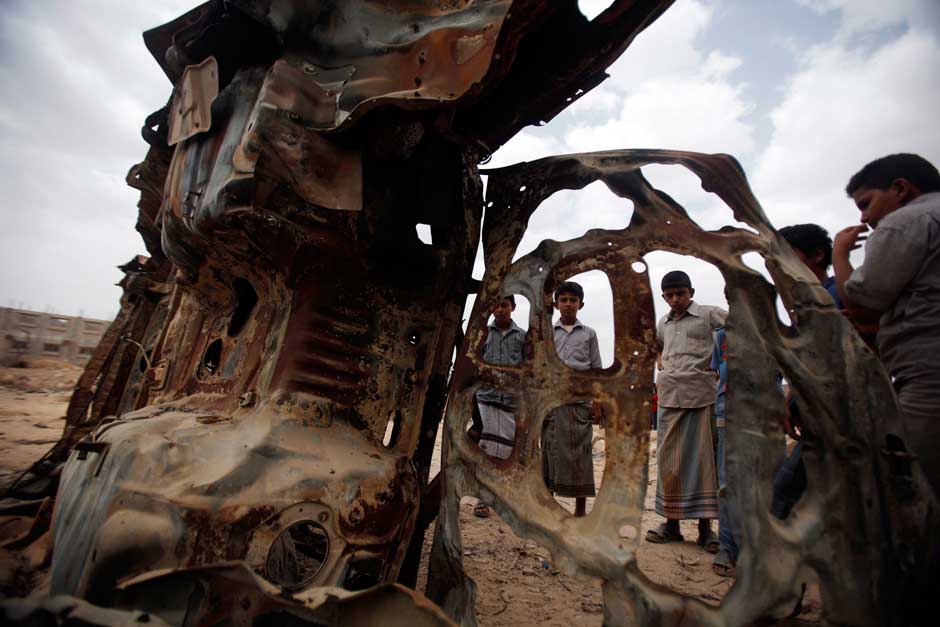On Monday, The New York Times reported that “the Senate has quietly stripped a provision from an intelligence bill that would have required President Obama to make public each year the number of people killed or injured in targeted killing operations in Pakistan and other countries where the United States uses lethal force.” National security officials in the Obama administration objected strongly to having to notify the public of the results and scope of their dirty work, and the Senate acceded. So much for what President Obama has called “the most transparent administration in history.”
The Senate’s decision is particularly troubling in view of how reticent the administration itself continues to be about the drone program. To date, Obama has publicly admitted to the deaths of only four people in targeted killing operations. That came in May 2013, when, in conjunction with a speech at the National Defense University, and, in his words, “to facilitate transparency and debate on the issue,” President Obama acknowledged for the first time that the United States had killed four Americans in drone strikes. But according to [credible accounts] (http://www.thebureauinvestigates.com/category/projects/drones/), Obama has overseen the killing of several thousand people in drone strikes since taking office. Why only admit to the four Americans’ deaths? Is the issue of targeted killings only appropriate for debate when we kill our own citizens? Don’t all human beings have a right to life?
In the NDU speech, President Obama also announced new limits on the use of drones “beyond the Afghan theater.” He proclaimed that drone strikes would be authorized away from the battlefield only when necessary to respond to “continuing and imminent threats” posed by people who cannot be captured or otherwise countermanded. Most important, he said, “before any strike is taken, there must be near-certainty that no civilians will be killed or injured—the highest standard we can set.” Yet in December, a US drone strike in Yemen reportedly struck a wedding party. The New York Times reported that while some of the victims may have been linked to al-Qaeda, the strike killed “at least a half dozen innocent people, according to a number of tribal leaders and witnesses.”
The decision to drop the requirement to report on the number of people we kill in drone strikes fittingly if depressingly came on the ten-year anniversary of CBS’s airing of the photos of torture and prisoner abuse at Abu Ghraib prison in Iraq. To this day, the United States has not held accountable any senior official for torture inflicted during the “war on terror”—not at Abu Ghraib, not at Guantanamo, not at Bagram Air Force Base, and not in the CIA’s secret prisons, or “black sites.” President Obama has stuck to his commitment to look forward, not backward, and his administration has opposed all efforts to hold the perpetrators of these abuses to account. Indeed, the administration has classified even the memories of the survivors of torture in CIA black sites, now housed at Guantanamo, maintaining that they and their lawyers cannot under any circumstance even talk publically about their mistreatment.
To be fair, Obama deserves some credit for both banning torture and achieving some transparency on the subject. In one of his first acts as president, he formally prohibited the “enhanced interrogation techniques” that his predecessor had approved—and that Bush and Cheney both proudly proclaim in their memoirs they would approve all over again. Shortly thereafter, Obama declassified the chilling secret memoranda, drafted by various Justice Department lawyers in the Bush Administration, that were designed to give legal cover to the CIA’s torture program. And most recently, in March, Obama said that he thinks that the Senate Select Committee on Intelligence report on the CIA’s interrogation program, the only comprehensive review based on access to classified information to date of the agency’s treatment of prisoners, should be declassified and released to the public. (The committee has voted to declassify and release a six hundred-page executive summary from the 6,300 page report, and it is now up to the president to live up to his statement and declassify it.)
But it’s one thing to demand transparency for a predecessor’s wrongs. It’s another to support it in regard to one’s own dubious actions. In the past, some have argued that the United States cannot be transparent about targeted killings in countries like Pakistan and Yemen because their governments approved of our use of lethal force within their borders on the condition that we not admit that we were doing so. The morality of such an agreement is itself deeply questionable; presumably the plausible deniability is demanded because no government could openly admit to its people that it had given another sovereign the green light to kill by remote control inside its own borders. But the deniability is no longer plausible.
Advertisement
As long ago as September, 2012, the Yemeni President Abed Raboo Mansour Hadi disclosed that he signed off on every US drone strike in Yemen, and in April 2013, former Pakistani President Pervez Musharraf similarly admitted that his government had agreed to targeted killings in Pakistan. Following the strike on the Yemeni wedding party last December, the government there conceded that civilians were killed, provided reparations to the survivors, and suspended permission to the United States to conduct further drone strikes until the incident was investigated. But the US has not even publicly acknowledged its own involvement—namely, as the killer.
International law acknowledges that killing is not always illegal or wrong, and that a government has the authority to do so as a last resort in genuine self-defense. But if the US government’s targeted killings are lawful, we should have no hesitation in making them public. Surely the least we can do is to literally count and report the lives we’ve taken. Yet even that, for “the most transparent administration in history,” is apparently too much.



